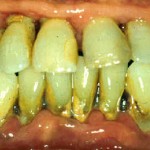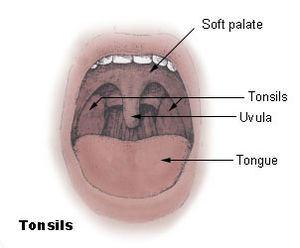In dentistry, precision attachments are the functional mechanical parts of the removable partial denture made of plastic, metal or a combination of both. Precision attachment partial dentures can be used to restore arches where there are not enough teeth for fixed bridgework. They consist of two parts referred as the ‘male’ part that is fixed to a crown inside the patient’s mouth and a ‘female’ part which holds the partial denture. The male is machined by the manufacturer to fit the female with such precision that any male out of the box will fit any female with an exact degree of accuracy. All of the precision attachments in a partial denture are positioned so that they are exactly parallel to each other. The patient can insert and remove the partial dentures and the aim of the precision attachment is to give the patient maximum comfort and ease while wearing, inserting or removing. Continue reading
Tag Archives: periodontal health
Symptoms of chronic periodontal disease
 Chronic periodontal disease is a disease which involves the destruction of gums and supporting tissues. This disease is often seen in adults and is the commonest cause of adult tooth loss. Before we proceed to discuss about the symptoms of chronic periodontal diseases, let us have a look at the characteristics of healthy gums. Continue reading
Chronic periodontal disease is a disease which involves the destruction of gums and supporting tissues. This disease is often seen in adults and is the commonest cause of adult tooth loss. Before we proceed to discuss about the symptoms of chronic periodontal diseases, let us have a look at the characteristics of healthy gums. Continue reading
Oral health Pt 1: Why is it so important?

Structures of the oral cavity
Oral health is defined as the health of all oral structures and while the usual focus lies on teeth, it is important to not neglect other oral structures such as the lips, tongue, inside lining of the mouth, roof of mouth or palate, soft palate, throat, and tonsils. Periodontal health should also be taken into consideration, as they are the supporting structures of the teeth which is crucial for adequate retention of teeth. All these play an important role in the functioning of the mouth hence need to be maintained at a satisfactory level in order to prevent problems. Continue reading